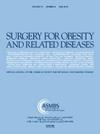Roux-en-Y gastric bypass versus duodenal switch in patients with body mass index ≥50 kg/m2: a systematic review and meta-analysis
IF 3.5
3区 医学
Q1 SURGERY
引用次数: 0
Abstract
Currently, there is no consensus on the best bariatric surgery type for patients with body mass index (BMI) ≥50 kg/m2. This systematic review and meta-analysis aimed to compare outcomes of duodenal switch (DS) and Roux-en-Y gastric bypass (RYGB) in terms of weight loss, resolution of obesity-related comorbidities, and complications among patients with a BMI ≥50 kg/m2. A systematic search was conducted across databases including PubMed, Embase, Scopus, and Web of Science to include studies that compared outcomes of DS and RYGB in patients with BMI ≥50 kg/m2. A meta-analysis was carried out, alongside subgroup analyses based on the type of study and duration of follow-up. Twelve articles were included in this study (2678 patients, follow-up: 1–15 years). Patients with DS had 7.31 kg/m2 higher BMI loss (95% CI: 5.59–9.03, P < .001) and 9.9% more total weight loss (95% CI: 4.47–15.28%, P < .001) compared with RYGB. The rate of complications, reoperation, mortality, and remission of comorbidities including diabetes, hypertension, dyslipidemia, and obstructive sleep apnea was not significantly different between DS and RYGB. Rate of malnutrition was 8.3% in the DS group compared with 1.2% in RYGB (OR: 5.53, 95% CI: 1.35–22.44, P = .02). In addition, 5.4% DS patients needed revisional surgery for malnutrition versus none in RYGB (OR: 6.1, 95% CI: 1.03–36.33, P = .05), and 24.6% of DS patients developed gallbladder disease needed cholecystectomy versus 4.5% after RYGB (OR: 6.36, 95% CI: 1.70–23.82, P = .01). DS leads to significantly higher BMI and total weight loss in patients with BMI ≥50 kg/m2 but may be associated with a higher rate of major malnutrition and needed revisional surgery. These should be considered in surgical planning.
体重指数≥50 kg/m2 患者的 Roux-en-Y 胃旁路术与十二指肠转流术:系统综述和荟萃分析。
目前,关于体重指数(BMI)≥50 kg/m2患者的最佳减肥手术类型尚未达成共识。本系统综述和荟萃分析旨在比较十二指肠转位术(DS)和Roux-en-Y胃旁路术(RYGB)在体重指数(BMI)≥50 kg/m2患者的体重减轻、肥胖相关并发症的缓解和并发症方面的效果。我们在PubMed、Embase、Scopus和Web of Science等数据库中进行了系统性检索,以纳入对BMI≥50 kg/m2患者进行DS和RYGB疗效比较的研究。在进行荟萃分析的同时,还根据研究类型和随访时间进行了分组分析。本研究共纳入了12篇文章(2678名患者,随访时间:1-15年)。与 RYGB 相比,DS 患者的体重指数降低了 7.31 kg/m2(95% CI:5.59-9.03,P < .001),总重量降低了 9.9%(95% CI:4.47-15.28%,P < .001)。并发症发生率、再次手术率、死亡率以及糖尿病、高血压、血脂异常和阻塞性睡眠呼吸暂停等合并症的缓解率在 DS 和 RYGB 之间没有显著差异。DS 组营养不良率为 8.3%,而 RYGB 组为 1.2%(OR:5.53,95% CI:1.35-22.44,P = .02)。此外,5.4% 的 DS 患者因营养不良而需要再次手术,而 RYGB 患者无此需要(OR:6.1,95% CI:1.03-36.33,P = .05);24.6% 的 DS 患者因胆囊疾病而需要进行胆囊切除术,而 RYGB 患者仅为 4.5%(OR:6.36,95% CI:1.70-23.82,P = .01)。DS 可使体重指数(BMI)≥50 kg/m2 的患者的体重指数和总重量明显增加,但可能与较高的严重营养不良率和需要再次手术有关。在制定手术计划时应考虑到这些因素。
本文章由计算机程序翻译,如有差异,请以英文原文为准。
求助全文
约1分钟内获得全文
求助全文
来源期刊
CiteScore
6.70
自引率
12.90%
发文量
570
审稿时长
56 days
期刊介绍:
Surgery for Obesity and Related Diseases (SOARD), The Official Journal of the American Society for Metabolic and Bariatric Surgery (ASMBS) and the Brazilian Society for Bariatric Surgery, is an international journal devoted to the publication of peer-reviewed manuscripts of the highest quality with objective data regarding techniques for the treatment of severe obesity. Articles document the effects of surgically induced weight loss on obesity physiological, psychiatric and social co-morbidities.

 求助内容:
求助内容: 应助结果提醒方式:
应助结果提醒方式:


